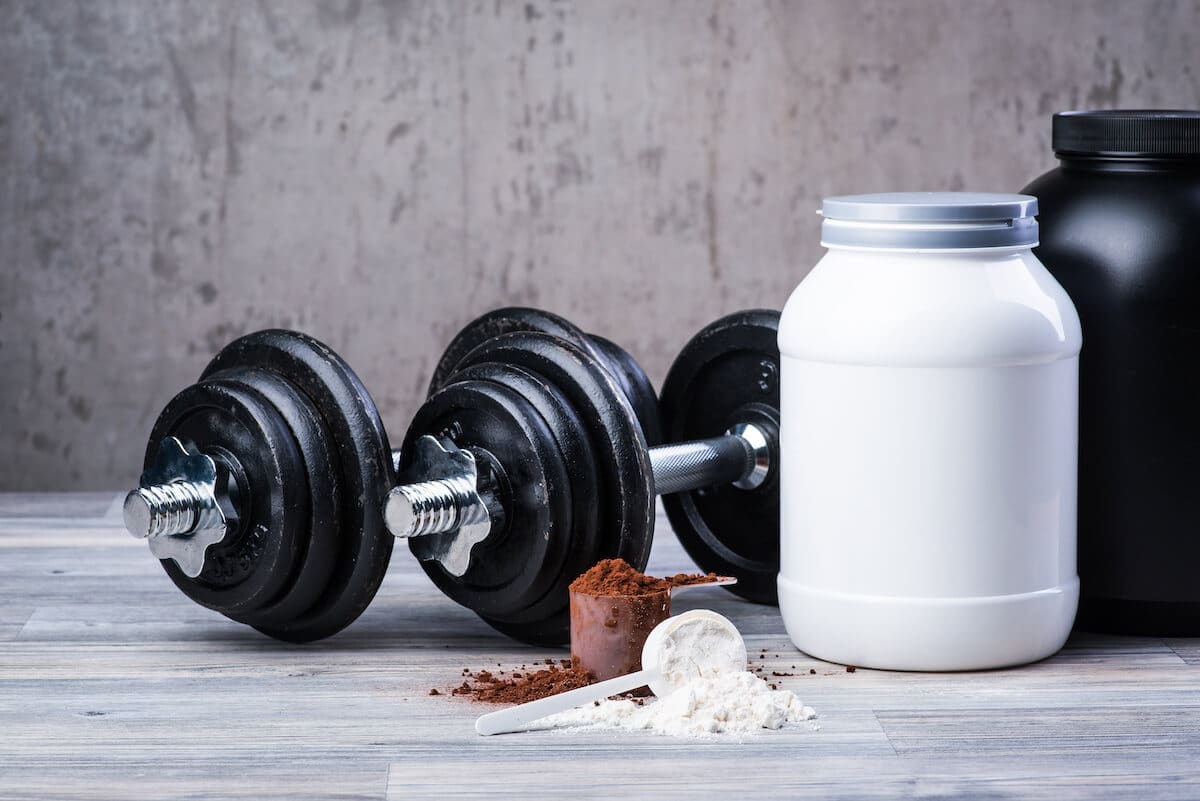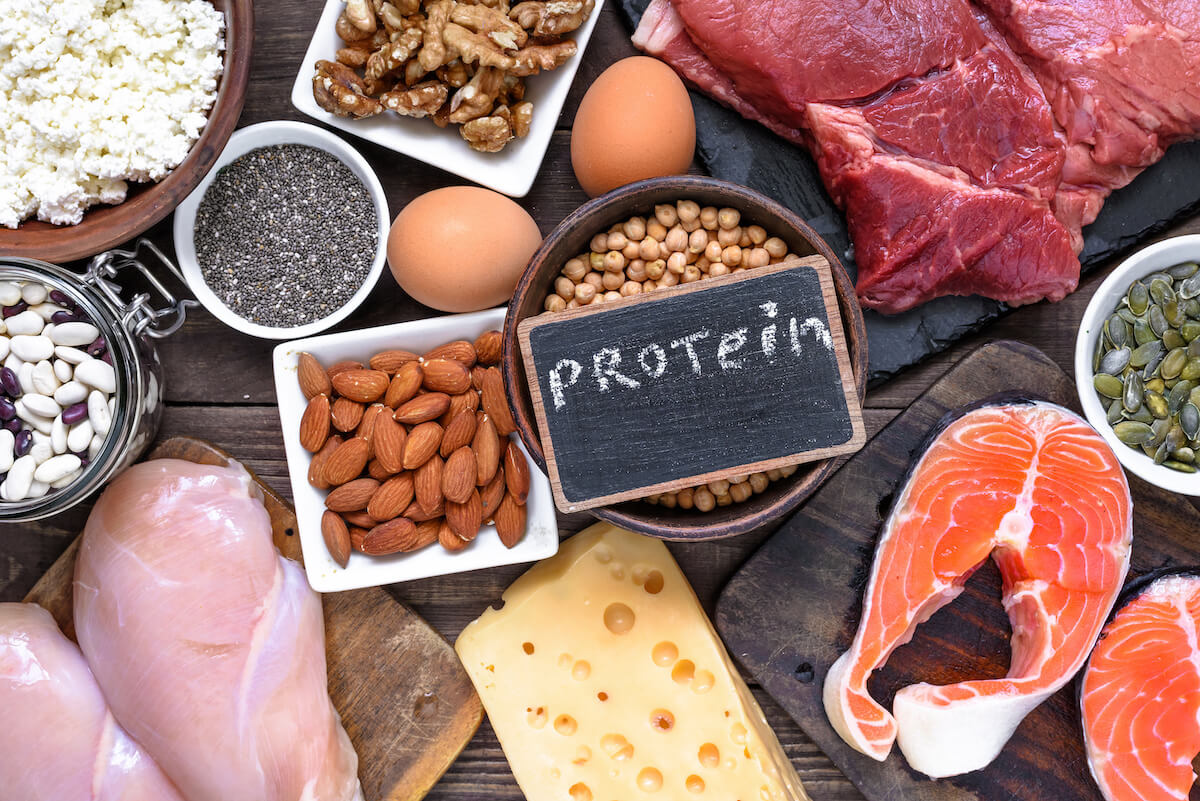
15 Oct How Long Does It Take to Build Muscle? Understanding Your Gains
How long does it take to build muscle? This is a common question most people ask when they start a new strength training program. But the answer is complex. The exact amount of time needed to see significant muscle gain varies based on several factors, both internal and external.
Put simply, muscle growth — known as hypertrophy — requires consistency over time with both your workout routine and nutrition. The better you understand how to build muscle mass and what you need to do so, the easier it will be. In this article, we’ll break it down so you can build muscle and reach your goals, whatever they are.
How Long Does It Take to Build Muscle?
The short answer is this: If you’re following an optimized strength training routine and eating the right macronutrients, you can expect to see noticeable muscle gains after one to two months of consistent training as a beginner. And if you keep with it, you’ll likely see dramatic changes in the amount of muscle on your body (and in your physical appearance) in 6-12 months. Past that, the rate of muscle hypertrophy slows over time.
Two months for initial growth might sound like a long time, especially when new lifters start seeing gains after a week or two of training. Some studies have shown nearly a 3.5% increase in muscle size in just two weeks, but that increase isn’t from genuine muscle hypertrophy.
Instead, this initial size increase is caused by swelling. When you exercise, it strains your muscles. Your muscle fibers experience microscopic tears during weight lifting workouts and other strenuous activities. Like most healing processes, edema (swelling) is natural during the recovery phase. This swelling makes your muscles puffy — often referred to as looking “swole” or “pumped.”
While this initial swelling looks and feels good, it will fade after a few weeks. It fades because your muscles adapt to your training routine and don’t swell as much during healing. After the initial pump is gone, you’ll start to see your actual gains. Muscle gain is always more visible to you than to other people, so you might notice a change in a month even though it takes others two months to see it.
There’s one more aspect of this complex answer. While it may take one to two months to see muscle gains in the mirror, you start building muscle almost immediately. And a statistically significant increase in mass can be observed after just seven sessions.
3 Factors That Influence Muscle Hypertrophy

Muscle growth, or muscle hypertrophy, is the primary goal of most exercise routines. (In addition to improved strength.) You want to build lean muscle mass to sculpt the appearance of a toned physique with muscle definition. Below, we’ve outlined some of the most significant factors that influence muscle hypertrophy to point you in the right direction.
1. Calories and Macronutrients

Your diet provides your body with everything it needs to keep you alive and thriving. Namely, calories, macronutrients (macros), and micronutrients. For this article, we’ll focus on calories and macronutrients, specifically protein.
Calories are units of energy that you get from everything you eat and drink, and they come from macronutrients. Macronutrients include carbohydrates (carbs), fat, and protein. Each gram of carbs and protein contains four calories, and each gram of fat contains nine calories. Finally, we have micronutrients, which are the vitamins and minerals your body needs in small doses.
A quality multivitamin will take care of most micronutrient needs. But it’s up to you to balance your macros. According to the International Sports Sciences Association (ISSA), the ideal macros for muscle building are 30-40% carbs, 25-35% protein, and 15-25% fats. These percentages refer to how much of your total caloric intake comes from each macro.
Note that these guidelines are generalized, but exact nutritional needs can vary from person to person. They’re a great place to start, but if you hit a plateau in progress, you might want to experiment with these percentages to find your ideal balance.
How Many Calories Do You Need?
Ideally, you’ll want a mild calorie surplus (more calories than your body needs each day) to build muscle. A surplus of around 500 calories (or 10% to 20% of your daily intake) is generally enough for muscle building.
To add a surplus, you must know your basal metabolic rate (BMR). Online calculators make determining your BMR easy, and most include charts for how many calories you’ll need for various activity levels. Once you have your BMR and an idea of how many calories you need to sustain your current workout schedule, you can calculate what you need for a calorie surplus.
For example, using the calculator linked above, a 25-year-old male who is 5’10” and 160 pounds would need 2,515 calories per day to support four to five workouts per week. Add 500 to that, and he’d need 3,015 calories per day for muscle gain. If this man consumes less than 2,515 calories, he may start to see weight loss instead, which is why it’s essential to track your food intake when building muscle.
If you’re not tracking your calories, you won’t know if you’re eating too little or too much. The best way to track your calories is with a calorie counting app or program. Most apps allow you to scan in foods or search for products, taking most of the work out of it. Look for one that includes macronutrients in addition to calories to simplify tracking your diet. MyFitnessPal might be a good place to begin.
How Much Protein Do You Need?
When you’re actively exercising, protein is what your body uses to build and repair muscle fibers. If you aren’t eating enough protein, your body won’t be able to build muscle as quickly as you would otherwise.
For individuals who do endurance training or strength training, you need around 0.5 to 0.8 grams of protein per pound of body weight. So, if you weigh 150 pounds, you’d need between 75 and 120 grams of protein per day. As you increase your weight by adding pounds of muscle, you’ll want to increase your protein intake accordingly.
Getting this much protein from your diet alone can be difficult, but it’s necessary to support muscle growth, especially if you’re strength training. Protein supplements allow you to get enough protein in your diet without overstuffing yourself or overdoing it on the rest of your macros.
Learn more in our guide explaining how much protein your body can use to adjust your protein intake if necessary.
2. Training Intensity and Recovery Schedule

Efficiently building muscle requires a solid training program. Ideally, you’ll want a balance of cardio exercise and resistance training. If you’ve heard that cardio is the enemy of muscle gain, don’t worry.
On the contrary, cardio training can improve muscle protein synthesis and aid muscle gain. You might want to avoid aerobic exercises lasting longer than 75 minutes, though. Remember: don’t overdo it. Always make sure you prioritize time to rest and recover, which we’ll talk about later in this section.
Building muscle through resistance training should include doing enough sets and repetitions (reps) each week for each of your major muscle groups. Your six major muscle groups include:
- Chest
- Back
- Arms
- Shoulders
- Legs
- Calves
The lower body only gets two of the six major groups, but that doesn’t mean you should skimp on your training. Each of these muscle groups includes multiple muscles. For example, legs include the glutes, quadriceps, and hamstrings, and arms include triceps and biceps. A bodybuilding coach or sports medicine trainer can help you train every muscle in every group for total muscle gain.
As for reps and sets, a good rule of thumb for muscle growth is generally two to three sets of 8-12 repetitions of each exercise.
You also need enough resistance to take you close enough to failure (the point when you can no longer complete the exercise correctly) that you build muscle and new muscle cells. However, training to failure is not necessary unless it’s in your training routine.
Resistance Training
Your workout plan should include at least one type of resistance training. Consider the following types of resistance training for hypertrophy:
- Free weight lifting: Kettlebells, dumbbells, and barbells used for deadlifts, bench press, biceps curls, triceps presses, and other exercises
- Weight training machines: Machines with handles, seats, weights, or hydraulics commonly found in gyms with varying weight options
- Medicine balls or sandbags: Weighted balls and bags that can be thrown, lifted, or carried during a workout
- Resistance bands: Long, stretchy bands that provide varying levels of resistance when stretched
- Suspension equipment: Rings, bars, or straps that use gravity plus body weight to create resistance
- Bodyweight exercises: Squats, pushups, pullups, and other exercises that rely on only your body weight
You need one or more types of resistance training to build muscle. Lifting weights and using bodyweight exercises is a common combination, but pick the activities you enjoy.
No one type of training is better than the other. It all depends on your goals for health, wellness, and physique. For example, if you want to compete in calisthenics competitions, your routine will look different than if you’re training for bodybuilding competitions.
Cardio Training
Combining cardio training with strength training won’t kill your gains. Instead, it may accelerate muscle growth while improving your overall endurance. Low-impact cardio done for short durations (20-45 minutes) can improve your heart health while potentially improving your muscle growth.
Separating your cardio days and lower body days is ideal, as it prevents muscle burnout. Training your upper body on cardio days should be fine, but having a dedicated cardio day doesn’t hurt.
Recovery

If you’re training hard and eating plenty of protein, you’re nearly there. But not quite. You also need recovery days. Recovery is a much-needed part of the muscle-building equation, and you don’t want to skip it. Think of your recovery days as “growth days” because that’s what you’re allowing your muscles to do.
Your periods of rest between workouts are what allow your body to build muscle and heal. This is why professional trainers focus on different muscle groups on separate days to give each group a chance to rest. Of course, these same professionals also include days when they’re not training anything, so their whole bodies can rest.
Try some of the following steps to optimize your recovery:
- Sleep at least 8 hours every night (not getting enough sleep can result in muscle loss)
- Schedule a minimum of one complete day off from strenuous exercise each week
- Schedule one “active rest day” each week for low-intensity activities like walking, hiking, or yoga
- Reduce your training intensity for one week every six to eight weeks (this is known as “deloading“)
- Take supplements that support recovery, such as whey protein powder or branched-chain amino acids (BCAAs)
While training less might not sound ideal, it’s necessary to build muscle. As you train regularly, you’ll look forward to your rest days and your deloading weeks. Remember, rest is required to build muscle efficiently, and it’s just as essential as training.
3. Genetic Potential
Your genetic potential is determined by biological factors that influence your athletic performance and growth. Differences in genetic potential can account for some variance in the amount of new muscle and existing muscle, and there’s no way to determine your genetic ceiling for muscle-building. However, it is worth noting that there may be a correlation between people with increased bone density and muscle growth potential.
Still, the best way to find out is to follow a regular workout routine and a healthy, nourishing diet. For beginners and those coming back to fitness, the chances are good that your genetic ceiling for muscle growth is much higher than your current physique would have you believe.
Sex also influences your genetic potential. Women do not produce as much testosterone as men, and testosterone drives muscle growth more than any other hormone. While it is true that women can’t build as much muscle as men, women can build muscle at a relatively similar rate.
If you’re a woman who’s worried about bulking up too much, don’t fret about protein or lifting. Proper nutrition, protein intake, and exercise won’t make you bulky, but they can help you get into great shape.
Where to Go From Here
How long does it take to build muscle? It depends on your genetics, training routine, and diet, but you should see results in the mirror in one to two months. And you’ll likely start to see dramatic changes in 6-12 months.
To see these changes, you’ll need to train regularly, track your diet, get enough macronutrients, and focus on your recovery. Regardless of genetic potential, almost anyone can gain muscle if they follow these guidelines.
It’s best to speak to your healthcare practitioner before making dramatic changes to your diet and exercise routine. Most beginners will see better results when working with an athletic coach or trainer to guide their journey. Even professional personal trainers often hire a trainer to keep them focused, motivated, and moving toward their goals.
If you need help getting enough protein in your diet, Ingredient Optimized (io) proteins such as ioWhey Protein and ioPea Protein can help. The Ingredient Optimized process is designed to naturally enhance the protein structure in these supplements so your body’s digestive enzymes can use them more easily. Look for ioProtein in Performix ioWhey Protein and Plantein by Kaged Muscle to optimize your muscle gains.


